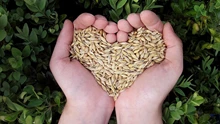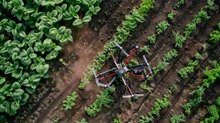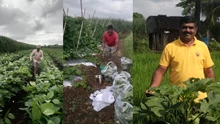
The Assam government intends to revise the crop calendar for the state's Kharif crops in order to align it with the erratic nature of the monsoon. The revision is especially important for paddy, the state's main crop grown on 70-80% of its land. A crop calendar typically contains information on sowing and harvesting windows for a specific crop based on rainfall and temperature parameters in a specific region. Farmers are given this information in the form of advisories.
The agriculture department of Assam, in collaboration with the Assam Agriculture University (AAU), recently requested this revision from the Indian Council of Agricultural Research-Central Research Institute for Dryland Agriculture (CRIDA). Following this, a committee was formed to investigate the degree of change in the state's rainfall pattern and temperature.
According to Kuldeep Medhi, junior scientist, agriculture meteorology, AAU, the two important rainfall seasons for Assam are pre-monsoon (March-May) and monsoon (June-September). "We've been noticing an unusual trend for the last five to six years: while Kharif crops are flooded one year, they face drought-like conditions the next."
As a result, he believes it is critical to revisit the existing sowing windows for various crops. The total volume of rainfall in the state's six agroclimatic zones has decreased, according to the scientist, who also stated that small rainy day events are decreasing and extreme events are becoming more common. This pattern can also be seen in some districts during the pre-monsoon season. Other districts, on the other hand, are receiving the most pre-monsoon precipitation. This has had an impact on rice yield.
Rice is Assam's main crop, accounting for 96% of the state's total food grain production. Rice is grown in three seasons: Sali (June/July to November/December), Ahu (March/April to June/July), and Boro (November/December to May/June).
"Among the three, Sali rice cultivation is spread across the state, whereas the other two are limited to a few districts," said Medhi. Farmers in the state are already implementing various climate-resilient practices on a small scale. Families in Nepali Pathar, Banai, and Nalbari villages in Dhemaji, one of the worst-affected districts, are growing more rabi crops than Kharif crops.
"We have also shifted more land to boro rice cultivation, which is sown in November and harvested in April or May," said Swadesh Hajong of Nalbari village. Floods usually cause the most damage to the traditional variety of Kharif paddy. Floods usually cause the most damage to the traditional variety of Kharif paddy. "Instead of Kharif paddy, which is slowly fading, we have begun cultivating vegetables such as potato, tomato, eggplant, okra, and peas," he added. People are also growing mustard and pulses and raising ducks, according to Hajong.
According to Santanu Bal, principal scientist at ICAR-CRIDA and chair of the Assam crop calendar revision committee, such a rethink is needed for the entire country. He stated that rainfed crops could no longer be sown according to normal sowing dates. In addition, some districts and states are revisiting the calendar on their own. Assam is the first state to formally approach CRIDA, according to Bal.
The National Rainfed Area Authority, in its most recent draught policy, published in July 2022, also emphasized the need for a cross-country crop calendar examination. "Long-term data for India show that rainfed areas have three to four drought years per decade." "Two to three are moderate in intensity, and one or two are severe," the authority stated.
Rainfed crops are likely to be the hardest hit due to limited options for dealing with rainfall and temperature variability, according to the report. "This may result in a shift in sowing time and a shorter growing season, necessitating effective sowing and harvesting date adjustments."












